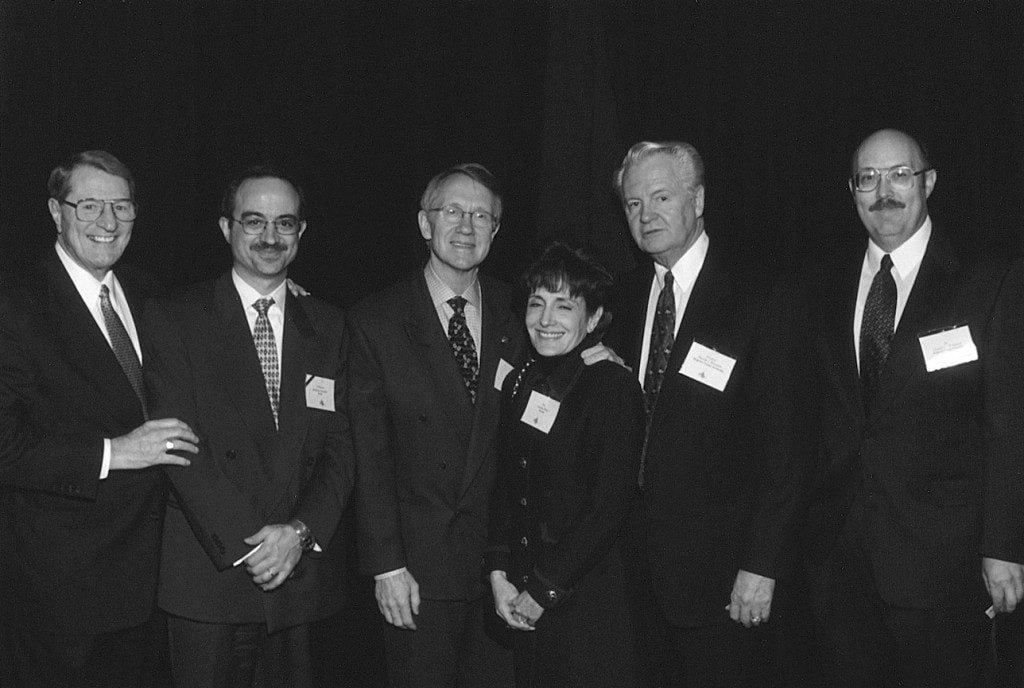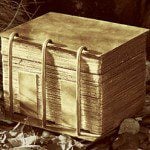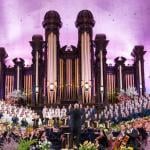
(Photo used courtesy of BYU)
Several years ago, out of the blue, a certain person claimed, online, that he had personally launched the Interpreter Foundation and that I had unethically stolen it from him. A number of people who had been present at the creation of Interpreter wrote to contradict and protest the claim, and the back-and-forth occasionallly became quite heated. The claim was utterly and demonstrably false and, after four or five days, the person who had advanced it withdrew it, claiming that he had only been joking.
I’m not sure what the point of the exercise was. The “joke” didn’t seem especially funny and it was completely false. However, if a friend had not noticed it and called it to the attention of others, I can only assume that it would still be up online, uncorrected.
Several of us thought, at the time, that the incident pointed up the need for us to tell our own story. Clearly, if we didn’t tell it, somebody else would. Maybe, we thought, we should have someone do oral history interviews with those who were principally involved with the establishment of Interpreter, and then a brief history could be written up and posted and perhaps even archived in BYU Special Collections. But we’re all busy, life intervened, and nothing was done. Moreover, unfortunately, since then we’ve lost Bill Hamblin, who was a central figure in the origin and earliest history of the Interpreter Foundation.
Now, though, another attempt has been undertaken by hostile individuals to create an alternative Bizarro World history of the 2012 Maxwell Institute putsch and the founding of Interpreter. It relies heavily upon spin and ill-disposed speculation to generate a narrative in which, predictably (given the identity of its main author), I’m a cartoonish villain and one of the main antagonists and my expulsion from the Maxwell Institute was a triumph of light, reason, and goodness.
This new effort illustrates the continuing need to compile an accurate history of Interpreter (and of the old FARMS/Maxwell Institute). We really need to do this.
I have no real desire to take on this new pseudohistory, and especially not while it’s still gestating. However, this morning I noticed a new contribution to the narrative that is simply and unambiguously wrong, and I think it wise to contradict it before it becomes the basis for yet more unfriendly speculation and myth-making.
According to this new historical fiction, Bill Hamblin, Louis Midgley, and I have concealed the fact that FARMS became a part, and only a part, of a pre-existing Maxwell Institute at BYU. President Hinckley, so the story goes, invited FARMS to join it. The Maxwell Institute had always been a collection of different projects and organizations, and FARMS simply became one more of those.
I think that the point of this new narrative might be that I and my buffonishly wicked cronies then sought to poison the heretofore wonderful Maxwell Institute — something of a hostile minority takeover, I guess — and that we were, accordingly, justly thrust forth from Paradise as a matter of self-defense.
But this is simply and unambiguously false, both as to fact and as to speculative implications.
The Foundation for Ancient Research and Mormon Studies, founded in 1979 in California and brought to Utah in 1980, functioned as an independent California-chartered foundation until, at President Hinckley’s invitation, it became formally affiliated with BYU in 1997. I know a great deal about this; I was chairman of the FARMS board through the negotiations and the affiliation. I met with President Hinckley and others during the many months that were required to make the transition from private foundation to a BYU-affiliated unit.
Since its founding, CPART (the Center for the Preservation of Ancient Religious Texts) had been a part of FARMS. And METI (the Middle Eastern Text Initiative) became a part of FARMS shortly after its founding. So they came into BYU with FARMS.
I know these two operations well. I was the director of CPART for several years, and I was the founder and first director of METI. Both were focused on non-Latter-day Saint texts.
But their non-LDS focus, coupled with the overtly LDS-focus of FARMS (the Foundation for Ancient Research and Mormon Studies) always threatened to make things slightly awkward. When, for example, I went to the Bibliotheca Apostolica Vaticana to meet with its director and librarian, Monsignor Raffaele Farina (who was afterwards elevated to the cardinalate), in order to create a project to digitize Syriac documents at the Vatican, we worried that CPART’s being a subordinate part of FARMS might complicate matters. As things turned out it didn’t. But that was a genuine and reasonable concern. And when we engaged with Muslims (and, later, with Jews and eastern Christians), we were worried that too explicit a connection between the Middle Eastern Texts Initiative and an organization expressly dedicated to “Mormon studies” might generate unfounded suspicions. It sometimes did, as a matter of fact. But we always managed to work through them.
Anyway, in 2001, we created an overarching name for an umbrella organization in which METI and CPART and FARMS could all be constituent parts — with FARMS always being the dominant element. It was the “Institute for the Study and Preservation of Ancient Religious Texts” (ISPART).
We never really liked that name. It was hastily invented in a meeting with BYU President Merrill Bateman, who wanted such an umbrella name for a presentation to the University’s board of trustees. I came up with it, I think, simply as a descriptive title for the work that we did. But it was dully prosaic and not a very memorable title, and I was surprised at its immediate acceptance.
In late July 2004, Elder Neal A. Maxwell passed away. A beloved member of the Council of the Twelve, he had been a personal friend, and a great friend especially of FARMS and METI. In February 2006, we were permitted to publicly announce that ISPART had been renamed the Neal A. Maxwell Institute for Religious Scholarship, in his honor. With members of the Maxwell family, I was present at the dinner in the President’s Room of BYU’s Ernest L. Wilkinson Center where President Boyd K. Packer and Elder Dallin H. Oaks officially changed the name.
“BYU renames ISPART to Neal A. Maxwell Institute for Religious Scholarship”
Neither President Gordon B. Hinckley nor BYU invited us to bring FARMS into an already existing BYU entity called “The Maxwell Institute.” We ourselves, with the approval of President Merrill Bateman, created the Institute for the Study and Preservation of Ancient Texts (ISPART) as an umbrella organization for FARMS, CPART, and METI — four years after we had become part of the University. And then, with the approval of Church leadership, ISPART became the Maxwell Institute. That was nine years after we had joined the University.
The constituent parts of the Maxwell Institute were FARMS, METI, and CPART, just as they had been the constituent parts of ISPART. There were no other parts, no other organizations.
The relevant Wikipedia entry gets things more or less right:
“The Maxwell Institute was established in 2006 as an umbrella organization for several of the BYU’s academic initiatives, including: the Middle Eastern Texts Initiative (METI), the Center for the Preservation of Ancient Religious Texts (CPART), the Laura F. Willes Center for Book of Mormon Studies, and the Foundation for Ancient Research and Mormon Studies (FARMS). By 2013, FARMS had become fully absorbed into the Institute’s Willes Center.”
Actually, though, the Laura F. Willes Center for Book of Mormon Studies was established in 2007, after the launch of the Maxwell Institute:
“Laura F. Willes Center for Book of Mormon Studies”
It’s important to get the history right. However, I have no illusions that my critics won’t continue to try to spin and speculate and demonize. So, for them, perhaps the best I can do is to cite the famous words of Mark Twain: “Get your facts first, then you can distort them as you please.”












